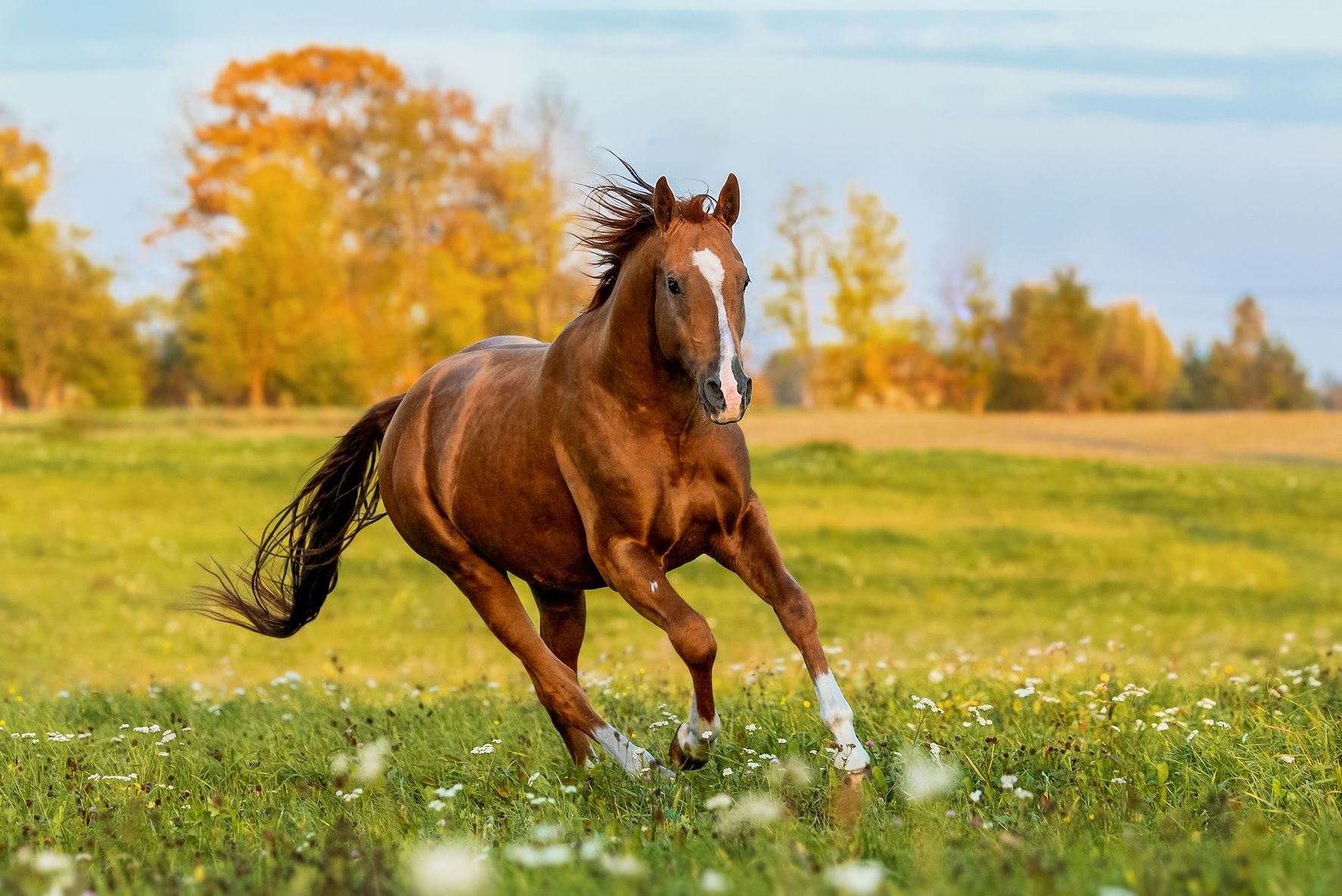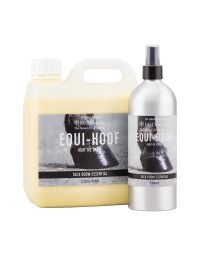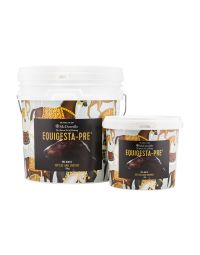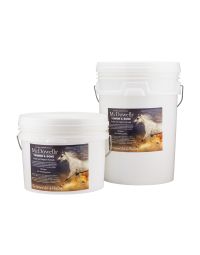Degenerative Suspensory Ligament Desmitis (DSLD), also known as Equine Systemic Proteoglycan Accumulation (ESPA), is a progressive and painful condition affecting the connective tissue in horses, particularly the suspensory ligaments.
Though once considered a rare issue seen primarily in older performance horses, increasing research and awareness have revealed that DSLD is more widespread and complex than originally thought, with systemic implications affecting multiple soft tissues throughout the body - not just the limbs.
While there is currently no known cure, the aim of natural support is to ease discomfort, slow progression, and support connective tissue integrity through herbal medicine, nutrition, and lifestyle practices.
Understanding DSLD: Beyond the legs
Ligaments are composed of dense, collagen-rich connective tissue that stabilise joints and absorb shock. In a healthy horse, ligaments heal through the production of collagen in response to microtrauma from everyday activity.
However, research (1,2) now shows that horses with DSLD exhibit abnormal tissue regeneration. Instead of regenerating collagen, the body lays down proteoglycan-rich cartilage-like tissue within the ligaments. These deposits are stiffer and more brittle, making the ligaments prone to strain and rupture.
This degenerative process most commonly affects the suspensory ligaments in all four limbs. But DSLD has also been found in the nuchal ligament, the patellar and deep digital flexor tendons, and even the aorta and sclera of the eye—highlighting its systemic nature (3).
While the precise cause is still under investigation, researchers believe that DSLD may have a genetic component, especially in breeds like Peruvian Pasos, Saddlebreds, Arabians, and Warmbloods (4). The systemic nature of the condition suggests metabolic, inflammatory, and biomechanical elements may all contribute.
Common Symptoms of DSLD
- Early signs can be subtle and are often mistaken for minor strains or general ageing. Look out for:
- Recurring unexplained lameness
- Stumbling or tripping
- Shifting weight from leg to leg
- Warmth or swelling in the fetlocks
- Reluctance to move
- Difficulty rising or “dog sitting”
- Stiffness in hips or back
- Behavioural changes or irritability
As the condition progresses, symptoms may include:
- Dropped fetlocks
- Horizontal pasterns
- Straightened hocks
- Hardening/enlargement of ligaments
These changes can lead to significant pain, loss of function, and long-term unsoundness.
McDowells Herbal Support for DSLD
At McDowells Herbal, we focus on restoring balance through targeted herbal formulas that support tissue integrity, circulation, and metabolic function. Our protocol addresses both the structural and systemic aspects of the condition.
1. Alleviate (Natural anti-inflammatory)
Chronic inflammation associated with DSLD can worsen pain and tissue degradation. Alleviate is a herbal alternative to phenylbutazone (Bute), designed to manage inflammation without harming the gut or liver. This formula contains herbs such as White Willow, Devil’s Claw, and Turmeric to modulate pain while supporting connective tissue resilience.
2. Hoof Heel (Circulation and nutrient support)
This topical hoof oil drives circulation-enhancing and regenerative herbs directly into the hoof and lower limbs. Poor circulation is a key contributor to ligament degeneration, as it impairs waste removal and nutrient delivery. Hoof Heel can help promote healthier hoof and ligament structure.
3. Tendon & Bone
This internal herbal blend nourishes connective tissues, supports cellular regeneration, and promotes mineralisation of bones and ligaments. With herbs like Comfrey, Yarrow, Horsetail, and Nettle, this formula helps strengthen weakened structures from the inside out.
4. Raw Linseed/Flaxseed Oil Massage
Massaging raw linseed oil into the affected limbs can soften tissues and improve local blood flow. Consider working with a qualified equine bodyworker, chiropractor, or acupuncturist to improve biomechanics and reduce compensatory strain.
Gut and Liver Support
Given the systemic nature of DSLD, supporting the detoxification pathways - especially the liver - is crucial. Many horses with connective tissue disorders also suffer from sluggish elimination or toxin accumulation. Herbs such as St. Mary’s Thistle, dandelion root, and rosehips can help maintain healthy liver function and support tissue repair.
Slippery elm powder, found in Equigesta-Pre, can be included to soothe the gut lining, particularly if your horse has previously been on non-steroidal anti-inflammatories. A healthy digestive system allows for better assimilation of nutrients required for tissue health.
Nutritional Support and Diet
Optimal nutrition is essential in managing DSLD.
Key nutritional strategies include:
- High-fibre, low-GI forage such as native grass hay
- Avoiding excess sugar and starch found in some processed feeds
- Silica-rich feeds such as ground millet to support collagen production
- Omega-3 fatty acids from flaxseed or chia to modulate inflammation
- Mineral supplementation with magnesium, zinc, and copper in bioavailable forms
Also, horses with DSLD often benefit from a diet that is anti-inflammatory and supports metabolic health.
Exercise and movement
Although horses with DSLD should not be ridden, regular, gentle movement is essential to maintaining circulation and lymphatic flow. Aim for:
- Hand-walking or turnout in a level, safe paddock
- Avoiding prolonged confinement in stalls
- Slow, controlled exercise every second day
- Avoid sudden movements or high-impact activity. Movement should be tailored to your horse’s comfort level and adjusted as symptoms fluctuate.
Trimming and farriery
Correct hoof balance is crucial. Therapeutic trimming and appropriate shoes or boots may help relieve strain on the suspensory ligaments. Look for a farrier experienced in managing biomechanical disorders, who understands the importance of balancing both toe length and heel angle.
Research and Emerging understanding
Ongoing research into DSLD is expanding our understanding of this complex condition. Notable findings include:
DSLD is now considered a systemic connective tissue disorder, not simply a local ligament injury (3). Histological studies show the presence of abnormal proteoglycan deposits in multiple soft tissues.
Genetic links have been suggested, particularly in certain breeds (4), though a definitive test is not yet available. These findings reinforce the importance of systemic, whole-horse treatment strategies.
McDowells Philosophy
Our holistic approach to DSLD aims not just to manage symptoms, but to restore vitality and balance across the whole horse. We do this by:
- Nourishing tissue health and supporting regenerative function
- Promoting circulation and detoxification
- Reducing inflammation naturally
References
Young et al., "Histopathological Characteristics of DSLD", Equine Vet Journal, 2020
Valberg et al., "Proteoglycan Accumulation in Equine Suspensory Ligaments", American Journal of Veterinary Research, 2016
Cornell University DSLD Study Group, 2019
Brooks et al., "Genetic Predisposition in DSLD", Journal of Equine Science, 2021




